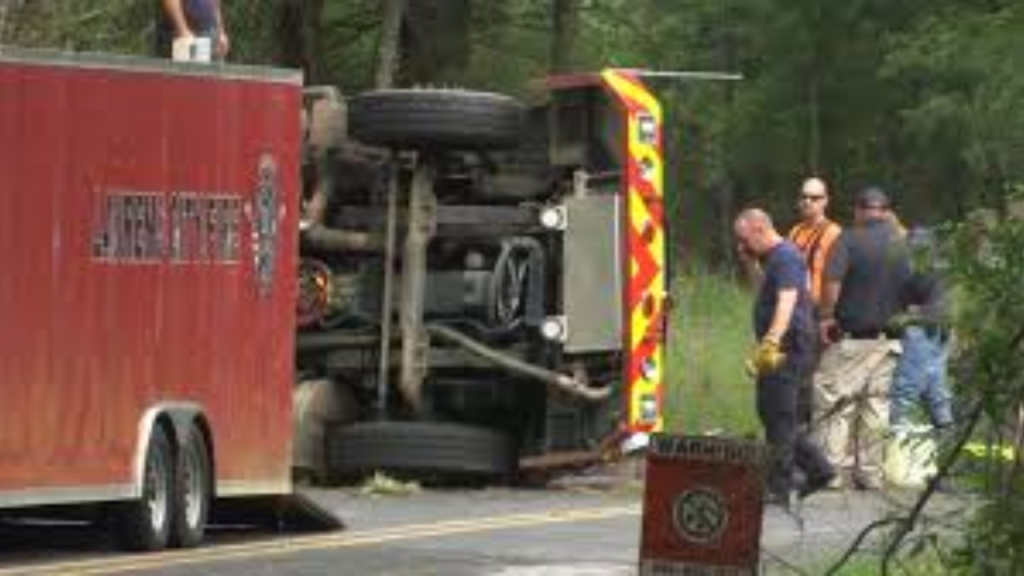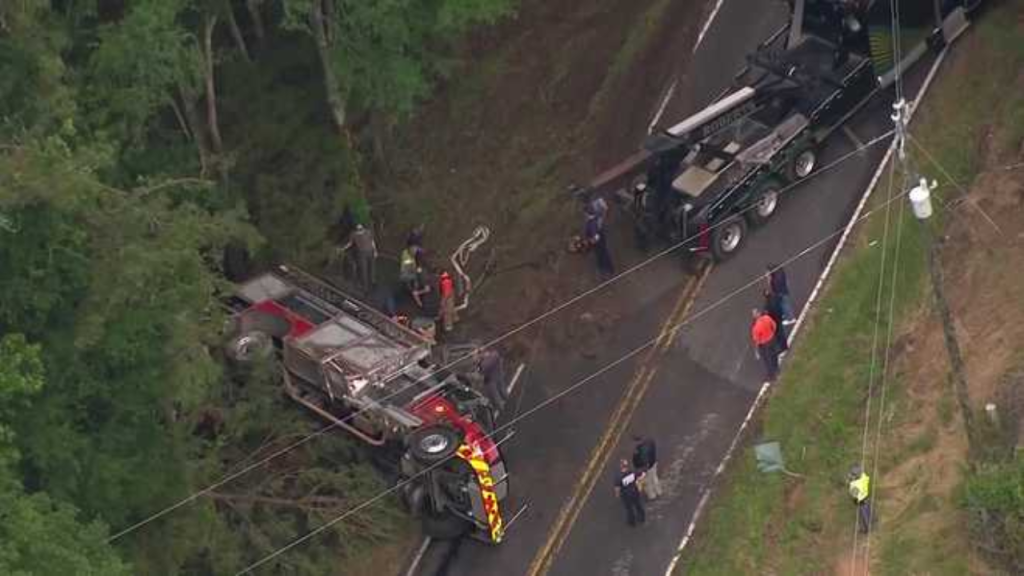
A routine drive took a dangerous turn Thursday morning when a fire truck from Laurens County flipped over and crashed into a tree, injuring two people on board. The South Carolina Highway Patrol confirmed that the fire engine was not responding to an emergency at the time of the accident.
The incident happened around 9 a.m. on Arnold Lane in the town of Waterloo, located in Laurens County. According to authorities, the fire truck veered off the right side of the road, hit a ditch, flipped over, and then slammed into a tree.
Troopers from the South Carolina Highway Patrol responded to the scene shortly after the crash was reported. Officials say the fire truck did not have its emergency lights or sirens on during the time of the accident, indicating it was not en route to a call.
Two people were in the fire truck at the time of the crash—the driver and one passenger. Both individuals were taken to a local hospital. Authorities stated that the injuries sustained were not life-threatening, though specific details about their condition have not been released.
South Carolina Highway Patrol spokespersons confirmed that the driver has been cited for “driving too fast for conditions.” The citation indicates that speed was a contributing factor in the crash, though there has been no mention of weather-related issues or other vehicles being involved.
Visual Damage and Road Conditions
Images from the crash scene show the fire truck lying on its side with extensive front-end damage. The windshield appears shattered, and parts of the cab were visibly crushed from the impact with the tree.
Emergency crews remained on the scene for an extended period, working to clear the debris and remove the damaged vehicle from the roadway. Local traffic was temporarily rerouted as cleanup and investigation efforts were underway.
The cause of the crash remains under investigation by the South Carolina Highway Patrol, but officials have stated that no criminal charges are being pursued at this time.

Not an Isolated Incident
Although fire trucks are designed to be heavy-duty and safe for emergency responses, incidents like this have become a concern for departments across the country. Driving a fire truck requires specialized training due to the vehicle’s weight and handling challenges.
The U.S. Fire Administration regularly reports on fire service vehicle accidents, and vehicle-related incidents remain one of the leading causes of firefighter injuries and fatalities nationwide. This has raised discussions about the need for regular training refreshers and stricter adherence to safety protocols during both emergency and non-emergency operations.
Similarly, the National Highway Traffic Safety Administration (NHTSA) emphasizes the dangers of heavy vehicle operation and the importance of cautious driving—even when conditions seem ideal. Speeding, even at modest levels, can greatly increase the risk of rollover crashes in large vehicles like fire trucks.
Community Response
Residents of Waterloo and Laurens County have expressed concern over the incident. While many are thankful the injuries were not severe, questions have been raised about internal safety policies and training within the department.
One resident, speaking anonymously, said, “These firefighters are heroes. They risk their lives every day, but we also need to ensure they’re protected and trained properly. A crash like this shouldn’t happen during a non-emergency trip.”
The Laurens County Fire Department has not yet released an official statement regarding the crash or the status of the injured personnel.
What’s Next?
As the investigation continues, the incident is likely to be reviewed internally by the fire department to determine if additional training or procedural changes are needed. The cited driver’s status within the department is also unclear at this time.
The overturned vehicle will be inspected for mechanical faults, although no equipment malfunction has been reported so far. The Highway Patrol has reiterated that the primary cause appears to be driver error related to speed.
Fire departments throughout South Carolina may look at this event as a wake-up call to revisit their vehicle safety protocols, especially during non-emergency transportation.
